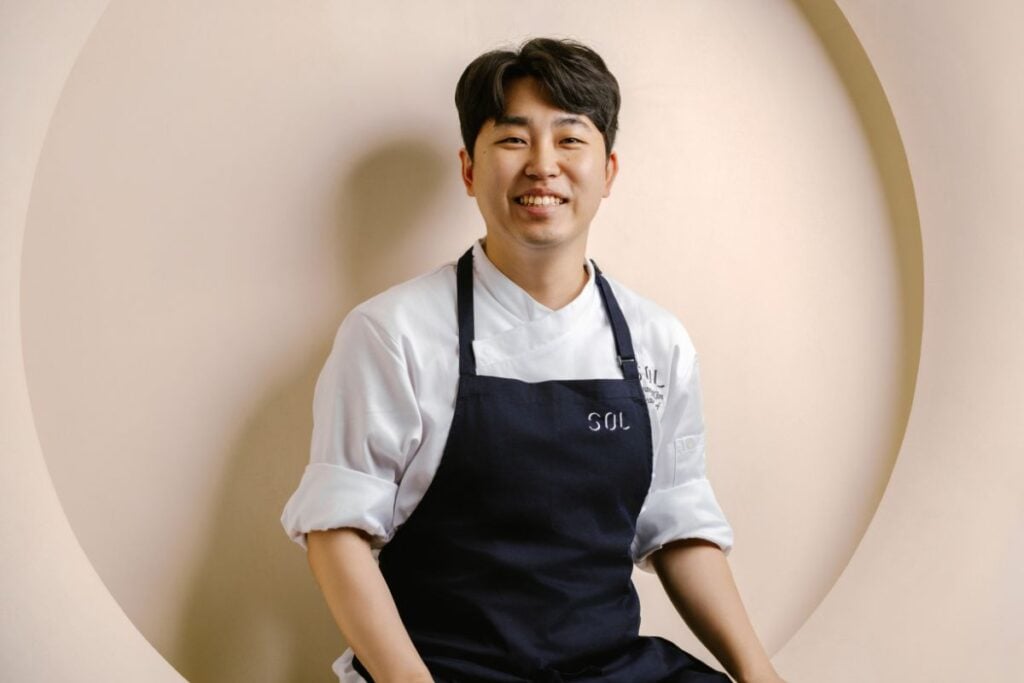With a menu designed over eight years, prior to him opening SOL Restaurant, GwanJu Kim lands in Hong Kong with a French-meets-Korean dining space.
Eight years ago, chef GwanJu Kim and his head pastry chef Kylie Yang began planning a menu for a future restaurant that would marry Korean ingredients and soul with French technique and plating.
Whilst employed at Singapore’s three Michelin-starred Odette, GwanJu earned his stripes studying the intricacies of French cooking at a restaurant with a signature for Asian touches, Kylie at one Michelin-starred Alma by Juan Amador, featuring “Modern European cuisine with Asian accents.”
Today, speaking inside Hong Kong’s newest Korean fine-dining restaurant SOL Restaurant, GwanJu finally realises his dream of operating in a kitchen with his Korean compatriot. The mission? To promote Korea’s mother earth and a national pride of what grows in the soil.
“Working with chef Julien Royer at Odette made me very jealous,” GwanJu remembers. During his three-year stint at the French fusion restaurant, he “used a lot of Japanese ingredients and Japanese cooking skills. Maybe, in the future, I thought, if I can open a restaurant, I will use the Korean touch and Korean ingredients.”
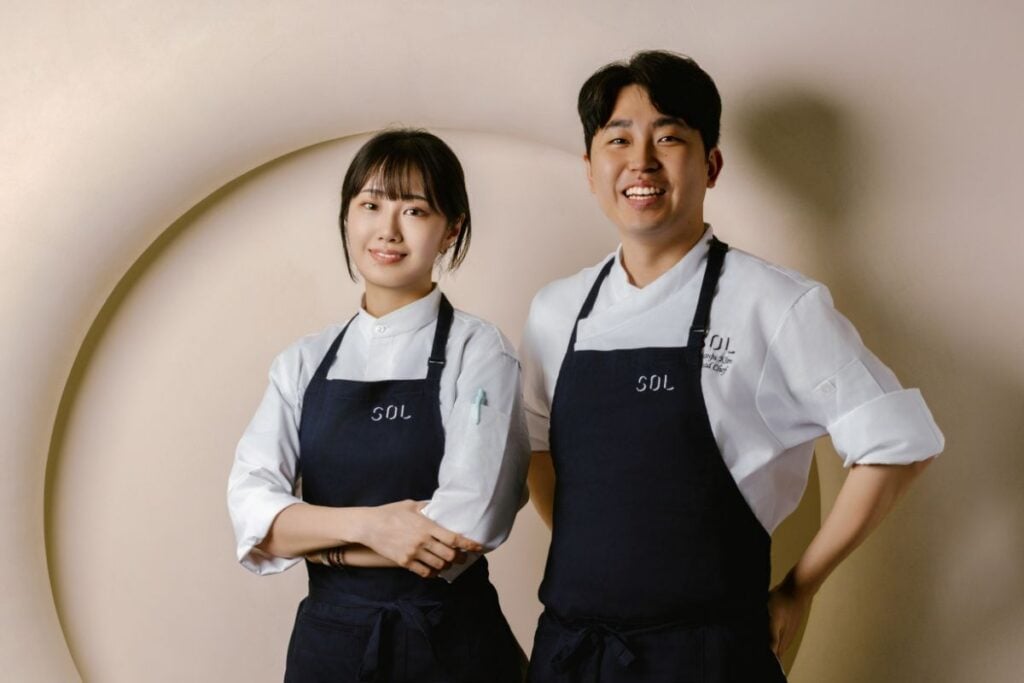
Working as a chef de partie, with Kylie acting as demi chef at Alma, he questioned “ why are restaurants always choosing only Japanese cuisine [to introduce in fusion restaurants]?”
Six months before opening SOL Restaurant, GwanJu and Kylie were pitched on the idea to open a French-meets-Korea restaurant from ZS Hospitality Group, the Michelin-star-studded restaurant group operating the likes of Whey, Feuille, Ying Jee Club, and sister restaurant Hansik Goo. Eight years later meeting at Odette, their dream came true.
“I am most experienced in French cuisine, but I am Korean. As a Korean, and especially working overseas in Hong Kong, I try to put the Korean culture and ingredients in every dish. I want to show people the uniqueness of Korean ingredients.”
With a dinner menu priced at HKD888, with upgrades reaching to HKD1,118, GwanJu brings a personal touch to the ingredient-forward dishes. “These are the ingredients I would use with my mom and grandmother when learning to cook in my childhood.”
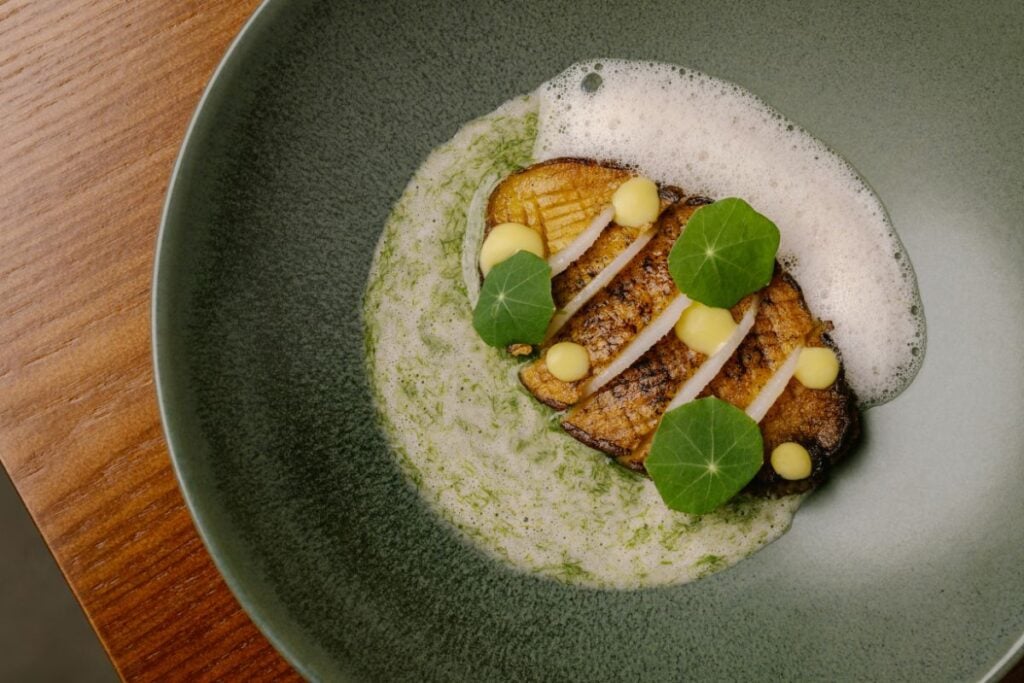
Their gyeran-jjim steamed egg dish uses Korean pine nuts as a powerful garnish, saewoo-jang marinated raw shrimp includes perilla leaf to add balance, and the ok-dom tilefish main dish is made with mugwort.
A signature dish on the menu, the Jeonbok add-on dish presents a Jeju Island abalone with maesaengi seaweed, farmed in the southern coast of the Korean peninsula, and miyeok, a seaweed variant likened to the taste of sea mustard.
Veritable Korean ingredients doenjang soy bean paste and gaji namul eggplant banchan also feature on the menu.
GwanJu doesn’t want to use English names for the Korean ingredients used in the dishes. The menu is designed to educate diners on the ingredients representing Korean cuisine.
At SOL Restaurant, the chef’s greatest challenge is to dissuade diners from associating the newly opened venue from sister restaurant Hansik Goo and fine-dining establishment Mosu.
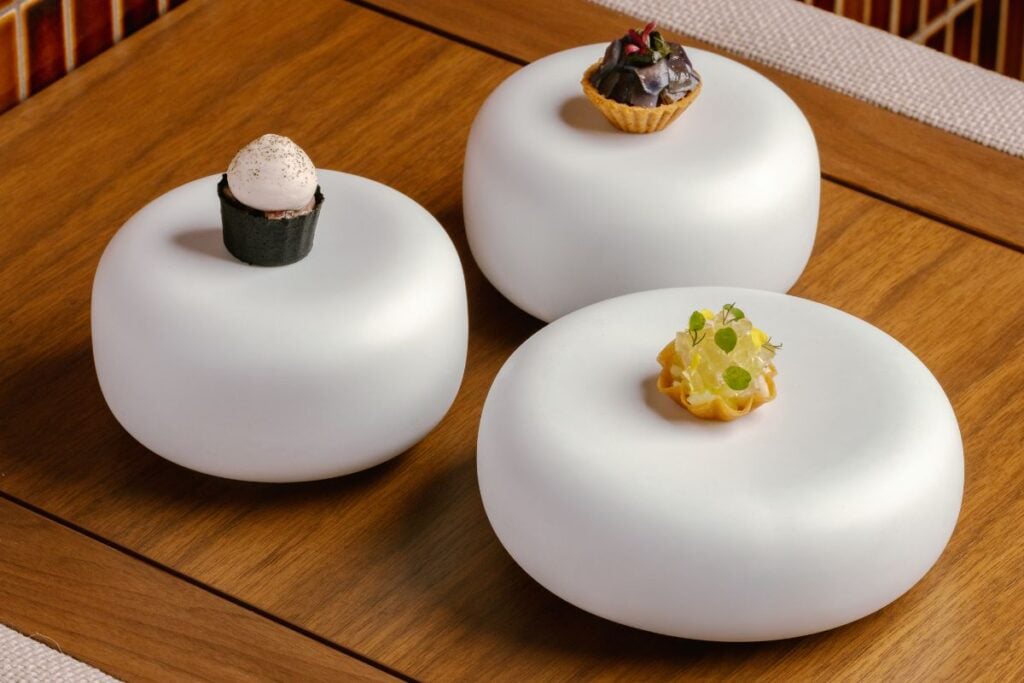
They serve fine-dining Korean cuisine, he states, but SOL “is casual fine-dining. With a lot of Korean dramas, movies, and singers gaining popularity, Korean street food also has become quite common globally, but I want to present a finer side.”
“Using a base of French cuisine, we can make Korean food more friendly here. We don’t want to be serious. We want you to come here, smile, laugh, and learn more about Korean culture in this cosy setting.”
The restaurant does not have real competitors, as SOL Restaurant’s eccentric identity is hard to fit in a box or compare alongside existing brands, GwanJu finds. In the kitchen, French cuisine plays an equally important role here alongside Korean cuisine. Vegetables are julienned, Korean sauces made into roux, and fish and meat cooked to confit.
“Korean cuisine is quite complicated, there are a lot of rules of how to eat dishes. We don’t have the rules here. This is just food and feelings here. You come [to SOL Restaurant] to relax and enjoy our food.”
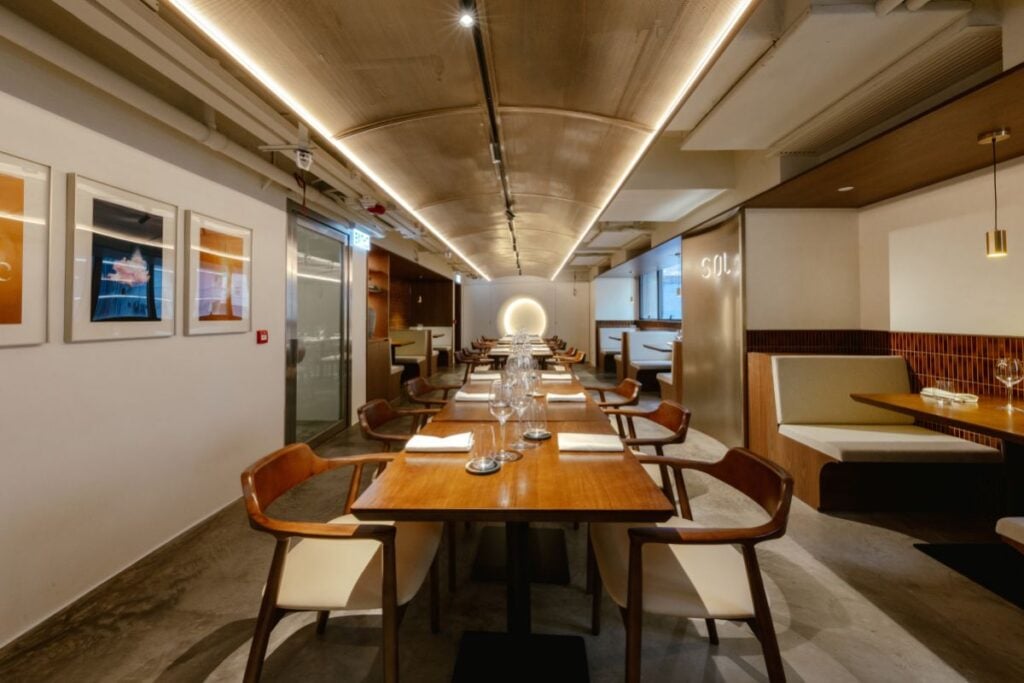
Speaking to Foodie inside the restaurant’s private dining room-cum-teaching studio, Solstice Cooking Studio, GwanJu understands the goals of the restaurant group he has joined and the journey for Michelin success.
ZS Hospitality Group counts five Michelin stars and two Michelin Guide features among its current eight restaurants.
“Of course, the aim is to win a Michelin star, but that’s not the goal right now. In the kitchen, we do not talk so much about this. We just want to focus on every single guest and educate them on the power of Korean ingredients.”
Serving lunch and dinner for six days a week, GwanJu and Kylie are wrapped up in the chaos of SOL Restaurant earning great fanfare. The restaurant is currently booked out for six weeks straight. Their days off on Sundays allows them to finally relish working together after eight years of planning.
Visit SOL Restaurant and journey through the history of Korean cuisine through the lens of fine French cooking

